It is Holy Week and this weekend is Easter. Usually I would be looking forward to a long weekend, with extra days off work, and time to rest and visit my family. But this year, 2020, will be quite different, and not just for me. I won’t be off to visit family or friends and neither will many people around the world. Instead we will find new and different ways to mark the festival.
As I sit and think about how Easter celebrations will be so different for everyone, I am reminded of the many ways that Holy Week and Easter are marked around the world. At the American Museum we have a collection of figures that were used in Holy Week celebrations in the southwest.
In our New Mexico rooms are a collection of santos – depictions of Holy figures crafted by itinerant artists of the American Southwest to depict various saints and holy figures.
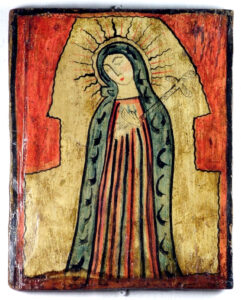
Nuestra Señora de los Delores (Our Lady of Sorrow), c.1835
These are in two forms, 2-dimensional (retablos – see above) painted onto wooden plaques and 3-dimensional figures (bultos – see below) carved from wood and painted.
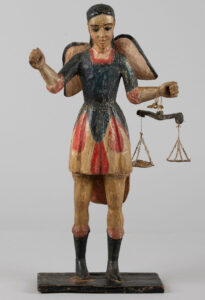
San Miguel Arcángel (Saint Michael the Archangel), 1840, José Rafael Aragón
In our Morada chapel are two bultos that may well have been used in Holy Week processions. These are a figure of the Virgin Mary and one of Jesus Nazarene. Both these figures are central to the Holy Week reenactments of the Passion and feature in processions.
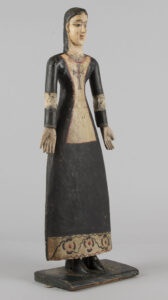
Nuestra Señora de la Soledad (Our Lady of Solitude), late C19th, José Benito Ortega
Our figures have articulated arms, making it possible for them to reach out and embrace one another for La Ecuentro – a reimagining of Mary and Jesus reuniting after his resurrection.
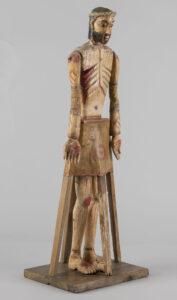
Jesús Nazareno (The Man of Sorrow), 1870-1907, José Benito Ortega
It is also possible that they would have been dressed in robes as part of the celebrations. The articulated arms make it easier to dress them.
In our New Mexico room is one of my favourite santos, Our Lady of the Rosary.
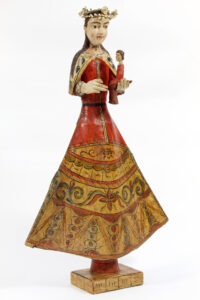
Nuestra Señora del Rosario (Our Lady of the Rosary), c.1835, Santo Niño Santero
The Museum’s depiction of Mary still has a figure of the Christ Child, whom she is holding in her left hand, but her rosary is missing from her right hand.
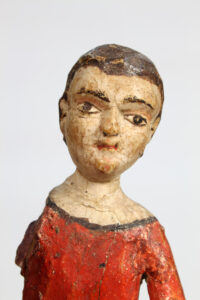
Christ Child
Her skirt is hollow, made by laying gessoed cloth over a wooden frame. This makes the figure lighter and easier to carry in processions. The features of her face are meticulously painted, as are her dainty fingernails. This intricate detailing is typical of the anonymous santero that made her. The characteristic style means that we are able to identify this as being by the Santo Niño Santero, named for the many images of the Holy Child that he crafted.
These three santos sit in our New Mexico and Morada rooms and are surrounded by other examples. Together they showcase the artistic skill of a group of travelling artists who created religious figures in exchange for food and lodgings.
The first of my altered Easter celebrations for 2020 has been to gift myself the time to write this piece and share a few of these treasures with you. It is a pleasure to take the time to revisit these delightful figures and share details of them with you. I hope that this Easter you too will be able to mark the festival by making time for something that you treasure and enjoy. Have a very happy Easter.





 Buy Tickets
Buy Tickets


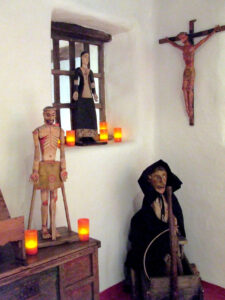
 Previous
Previous
 Back to top
Back to top